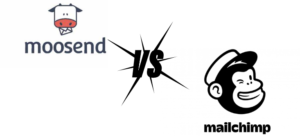Online email marketing is a way for businesses to communicate with their audience through email. It involves sending messages, updates, and promotional content directly to people’s email inboxes. In the digital age, email marketing is crucial for building and maintaining relationships with customers. Online email marketing allows businesses to reach their audience directly, delivering messages straight to their inboxes. Marketers can tailor emails based on customer preferences and behaviors, ensuring more relevant content and higher engagement. Compared to traditional marketing methods, email marketing is cost-effective, making it an efficient way for businesses of all sizes to connect with their audience.
Content
1. Understanding Online Email Marketing
Online email marketing is a digital marketing strategy that involves sending targeted messages, updates, and promotional content directly to individuals via email. Businesses use email campaigns to engage with their audience, build relationships, and promote products or services.
1.1 Evolution and Current Trends of Online Email Marketing
1.1.1 Evolution
Email marketing has evolved significantly since its inception. Initially used for simple communication, it has transformed into a sophisticated strategy with personalized content, automation, and data-driven insights. The evolution has been marked by the integration of analytics, segmentation, and improved targeting.
1.1.2 Current Trends
- Personalization: Tailoring emails to individual preferences and behaviors for a more personalized experience.
- Automation: Utilizing automated workflows for tasks like welcome emails, abandoned cart reminders, and personalized recommendations.
- Mobile Optimization: Designing emails for mobile devices to accommodate the increasing number of users accessing emails on smartphones.
- Interactive Content: Incorporating interactive elements like polls, quizzes, and videos to enhance engagement.
- Data-driven Insights: Leveraging analytics to gather insights into customer behavior, preferences, and campaign performance.

1.2 Integration into Digital Marketing Strategy
Online email marketing is a crucial component of a broader digital marketing strategy. It complements other channels such as social media, content marketing, and SEO by:
- Building Relationships: Online email marketing helps nurture relationships with customers, fostering loyalty and trust over time.
- Driving Traffic: Online email marketing campaigns can direct recipients to specific landing pages, blog posts, or social media platforms, increasing overall online presence.
- Personalization: Integrating data from other digital channels enables businesses to create highly personalized online email marketing campaigns, aligning with broader personalized marketing strategies.
- Conversion Optimization: Through targeted messages and timely offers, online email marketing contributes to the conversion funnel, converting leads into customers.
- Cross-Channel Consistency: Coordinating email content with other digital marketing efforts ensures a consistent brand message across various online platforms.
Online email marketing has evolved into a dynamic strategy, incorporating trends like personalization and automation. When seamlessly integrated into a broader digital marketing strategy, it becomes a powerful tool for building relationships, driving traffic, and optimizing conversions in the digital age.
2. Building Your Email List
A targeted email list is crucial for the success of your online email marketing efforts. Unlike a generic list, a targeted one consists of individuals who have a genuine interest in your products or content. This specificity brings several advantages:
2.1 Advantages of a Targeted Email List
- Relevance: Targeted lists ensure that your emails are relevant to the recipients, increasing the chances of engagement and conversions.
- Higher Open Rates: People are more likely to open emails that align with their interests, resulting in higher open rates for targeted lists.
- Improved Conversion Rates: When your emails resonate with the recipients, it’s more likely to lead to desired actions such as making a purchase or subscribing to a service.
- Reduced Unsubscribes: Targeting ensures that your audience receives content they find valuable, minimizing the likelihood of them unsubscribing from your emails.
2.2 Strategies for Growing Your Email List
- Create Compelling Content: Offer valuable content through your website, blog, or social media to encourage visitors to subscribe. This could include exclusive offers, useful resources, or informative newsletters.
- Use Opt-in Forms: Place strategically located and visually appealing opt-in forms on your website. Consider using pop-ups, slide-ins, or embedded forms to capture visitor information.
- Run Contests and Giveaways: Host contests or giveaways, requiring participants to provide their email addresses to enter. This can attract people interested in your offerings.
- Leverage Social Media: Promote your email sign-up through your social media channels. Use enticing visuals and compelling copy to encourage followers to join your email list.
- Implement Referral Programs: Encourage your current subscribers to refer friends or colleagues by offering incentives. This can quickly expand your email list with a relevant audience.

2.3 Tips for Maintaining List Health and Hygiene
- Regularly Clean Your List: Remove inactive subscribers or those who consistently don’t engage with your emails. This helps maintain a more accurate representation of your active audience.
- Use Double Opt-in: Implement a double opt-in process to ensure that subscribers genuinely want to receive your emails. This helps reduce the likelihood of spam complaints.
- Segment Your List: Divide your email list based on characteristics such as demographics, preferences, or purchase history. This allows you to send more targeted and relevant content to specific groups.
- Provide Clear Unsubscribe Options: Make it easy for subscribers to opt out if they wish. This not only ensures compliance with regulations but also helps in maintaining a healthy list by retaining only engaged subscribers.
- Monitor Email Deliverability: Keep an eye on email deliverability rates and address any issues promptly. High bounce or complaint rates can negatively impact your sender reputation.
By prioritizing a targeted email list, implementing effective growth strategies, and maintaining list health, you can enhance the success of your online email marketing campaigns and build lasting relationships with your audience.
3. Crafting Compelling Email Content
Email content is a critical component of successful online email marketing. To capture your audience’s attention and drive action, focus on three key aspects: engaging subject lines, effective email copy, and personalized and segmented content.
3.1 Engaging Subject Lines
- Be Concise and Intriguing: Keep subject lines short and to the point. Intrigue your audience by teasing the content inside without giving everything away.
- Use Urgency and Scarcity: Create a sense of urgency or scarcity by incorporating time-limited offers or exclusive deals, encouraging recipients to open your email promptly.
- Personalization: Include the recipient’s name or reference their preferences to make the subject line more personalized and relevant to them.
- Ask Questions: Pose questions that pique curiosity or address a pain point, prompting recipients to open the email in search of answers.
- Emojis: When appropriate, use emojis to add a touch of personality and visual appeal to your subject lines. However, use them sparingly.

Best Practices for Email Copy that Converts:
- Start with a Strong Hook: Grab attention from the beginning with a compelling opening that addresses the recipient’s needs, interests, or challenges.
- Focus on Benefits: Clearly communicate the benefits of your product or service. Explain how it solves a problem or improves the recipient’s life.
- Use Persuasive Language: Employ persuasive language that encourages action. Words like “exclusive,” “limited time,” and “free” can prompt engagement.
- Scannable Content: Break up your content into short paragraphs, use bullet points, and include relevant images to make your email easy to read and digest.
- Clear Call-to-Action (CTA): Clearly state what action you want the recipient to take, whether it’s making a purchase, downloading a resource, or subscribing.
Importance of Personalization and Segmentation:
- Increased Relevance: Personalized content resonates more with recipients, making them feel understood and valued, which can lead to higher engagement.
- Higher Conversion Rates: Segmented and targeted emails are more likely to convert because they address the specific needs and interests of particular groups within your audience.
- Improved Customer Retention: Personalization fosters a sense of connection, contributing to stronger customer relationships and increased loyalty over time.
- Optimized Email Deliverability: Email service providers often prioritize emails with relevant and personalized content, improving your chances of reaching recipients’ inboxes.
- Enhanced Analytics: By segmenting your audience, you can gather more accurate data on how different groups respond to your emails, allowing for continuous improvement and optimization.
Crafting compelling email content involves mastering engaging subject lines, employing best practices for persuasive copy, and recognizing the importance of personalization and segmentation. By combining these elements, you can create emails that not only capture attention but also drive meaningful actions from your audience.
4. Designing Emails for Maximum Impact
In online email marketing, design plays a crucial role in capturing the audience’s attention, conveying your message effectively, and encouraging desired actions. A well-designed email can enhance brand perception, increase engagement, and drive conversions.
4.1 Role of Design in Email Marketing
- First Impressions: The design is the first thing recipients notice. A visually appealing and well-organized layout creates a positive first impression, encouraging users to explore the content.
- Brand Consistency: Consistent design elements, such as colors, fonts, and imagery, reinforce brand identity. This familiarity helps recipients associate the email with your brand, building trust over time.
- Readability and Scannability: A well-designed email is easy to read and scan. Clear headings, concise paragraphs, and strategic use of white space contribute to a more user-friendly experience.
- Call-to-Action (CTA) Emphasis: Effective design highlights the CTAs, guiding recipients toward the desired actions. Visual cues, contrasting colors, and strategically placed buttons can draw attention to key elements.
- Mobile Responsiveness: With a growing number of users accessing emails on mobile devices, responsive design ensures that your email looks good and functions well on various screen sizes.

4.2 Tips for Creating Visually Appealing Emails
- Use a Clean Layout: Keep the design uncluttered with a clear hierarchy. Place important elements like headlines and CTAs prominently.
- Eye-Catching Images: Include high-quality, relevant images to capture attention. Optimize image file sizes for faster loading times.
- Consistent Branding: Maintain consistent branding elements throughout, such as your logo, color scheme, and typography, to reinforce brand identity.
- Readable Fonts: Choose readable fonts and font sizes to ensure that your content is easily digestible. Sans-serif fonts are often preferred for online readability.
- Color Psychology: Leverage color psychology to evoke emotions and guide the recipient’s perception. Use contrasting colors for important elements like CTAs.
4.3 Optimizing Emails for Different Devices
- Responsive Design: Ensure your email template is responsive, adjusting its layout and elements to fit various screen sizes, from desktop monitors to smartphones.
- Test Across Devices: Before sending out campaigns, test your emails on different devices and email clients to catch any formatting issues and ensure a consistent experience.
- Mobile-First Approach: Given the prevalence of mobile users, design your emails with a mobile-first mindset. Prioritize concise content, easily tappable buttons, and streamlined layouts for smaller screens.
- Fluid Grids and Flexible Images: Use fluid grids and flexible images that can adapt to different screen sizes, allowing for a seamless viewing experience.
- Readable Text: Ensure that your text is legible on smaller screens. Opt for a font size and line spacing that maintains readability even on mobile devices.
By understanding the role of design in online email marketing, following tips for creating visually appealing content, and optimizing emails for different devices, you can enhance the impact of your email campaigns and provide a positive user experience for your audience across various platforms.
5. Online Email Marketing Automation
Online email marketing automation involves using technology and predefined workflows to send targeted and personalized emails to your audience based on their behavior, preferences, or interactions with your brand. Automation allows businesses to streamline their email campaigns, saving time and delivering more relevant content to subscribers.
5.1 Benefits of Automating Your Email Campaigns
- Time Efficiency: Automation eliminates the need for manual intervention in sending emails, saving time and allowing marketers to focus on strategy, analysis, and creativity.
- Personalization at Scale: Automation enables the delivery of personalized content to individual subscribers, creating a more tailored and engaging experience for each recipient.
- Behavioral Targeting: By tracking user behavior, automation allows you to send emails triggered by specific actions, such as abandoned cart reminders, welcome sequences, or re-engagement campaigns.
- Consistency: Automation ensures a consistent schedule for your email campaigns, maintaining regular communication with your audience without the risk of oversight or delays.
- Improved Analytics: Automation tools often come with robust analytics features, providing insights into the performance of your campaigns and helping you make data-driven decisions for optimization.

5.2 Tools and Software Recommendations
- Mailchimp: An easy-to-use platform suitable for small to medium-sized businesses, Mailchimp offers automation features, A/B testing, and detailed analytics.
- HubSpot: Known for its comprehensive inbound marketing tools, HubSpot provides automation capabilities for email, social media, and lead nurturing, with integrated analytics.
- ActiveCampaign: A versatile platform with powerful automation features, ActiveCampaign allows for advanced segmentation, personalized messaging, and CRM integration.
- ConvertKit: Tailored for content creators and bloggers, ConvertKit offers user-friendly automation features, visual workflows, and subscriber tagging for targeted campaigns.
- Brevo: With a focus on simplicity and affordability, Brevo provides automation features, email marketing, and transactional emails, suitable for small businesses.
- Drip: Designed for e-commerce businesses, Drip offers sophisticated automation workflows, segmentation, and personalization to boost customer engagement and conversions.
- GetResponse: A versatile platform suitable for both small businesses and enterprises, GetResponse offers email marketing, automation, and webinar hosting in one platform.
- ClickFunnels: A popular platform for creating sales funnels, landing pages, and marketing automation. ClickFunnels includes basic marketing automation features, allowing you to set up email sequences and automate certain aspects of your sales process.
When choosing an online email marketing automation tool, consider your business size, specific needs, and the level of complexity required for your online email marketing campaigns. These recommendations provide a range of options to suit different preferences and requirements.
6. Analyzing and Optimizing Your Email Campaigns
The importance of tracking metrics and Key Performance Indicators (KPIs) is crucial for evaluating the success of your online email marketing campaigns and gaining insights into how well they resonate with your audience.
6.1 Importance of Tracking Metrics and KPIs
Key metrics include:
- Open Rate: Indicates the percentage of recipients who opened your email. A high open rate suggests an effective subject line and relevant content.
- Click-Through Rate (CTR): Measures the percentage of recipients who clicked on one or more links in your email. It reflects the engagement level and the effectiveness of your content.
- Conversion Rate: Tracks the percentage of email recipients who completed the desired action, such as making a purchase or filling out a form. A high conversion rate indicates campaign success.
- Bounce Rate: Represents the percentage of emails that were not successfully delivered to recipients. High bounce rates may indicate issues with your email list quality or delivery.
- Unsubscribe Rate: Measures the percentage of recipients who opt-out or unsubscribe from your email list. Monitoring this rate helps assess the relevance of your content.

6.2 How to Use Data to Refine Your Email Strategy
- Segmentation: Analyze customer data to segment your audience based on demographics, behaviors, or preferences. Tailor your email content to each segment for more personalized and targeted campaigns.
- Behavioral Triggers: Use data on customer behavior to set up triggered emails. For example, send a follow-up email to users who abandoned their shopping carts or a thank-you email after a purchase.
- Optimal Send Times: Analyze when your audience is most active and responsive to your emails. Schedule campaigns to align with these optimal times for improved open and click-through rates.
- Content Optimization: Review the performance of different types of content, such as images, videos, or text-heavy emails. Use data to identify what resonates most with your audience and refine your content strategy accordingly.
- Iterative Testing: Implement changes gradually based on data insights. Whether it’s adjusting subject lines, tweaking content, or refining CTAs, iterative testing allows you to optimize your strategy over time.
6.3 A/B Testing for Continuous Improvement
- Subject Lines: Conduct A/B tests on different subject lines to identify which ones generate higher open rates. Experiment with variations in length, tone, and urgency.
- Email Copy: Test variations in email copy, including messaging, tone, and the use of personalized content. Identify which elements resonate best with your audience and lead to higher engagement.
- Call-to-Action (CTA): A/B test different CTAs to determine which ones drive more clicks and conversions. Experiment with wording, placement, and design.
- Visual Elements: Test the impact of different visuals, layouts, and images in your emails. Discover which visual elements contribute to higher engagement and better convey your message.
- Timing and Frequency: Experiment with the timing and frequency of your emails. Test different days of the week and times to find the optimal schedule for your audience.
By consistently tracking metrics, leveraging data to refine online email marketing strategies, and implementing A/B testing for continuous improvement, you can adapt and optimize your online email marketing campaigns to better meet the needs and preferences of your audience over time.
Conclusion: Online Email Marketing
Key Takeaways
- Targeted Email Lists: Building and maintaining a targeted email list is essential for the success of your email marketing efforts. Focus on quality over quantity to ensure relevance and engagement.
- Compelling Email Content: Craft emails with engaging subject lines, persuasive copy, and a clear call-to-action. Personalization and segmentation enhance the impact of your content.
- Design for Maximum Impact: A well-designed email is crucial for capturing attention. Use clean layouts, eye-catching visuals, and mobile-responsive designs to create visually appealing content.
- Email Marketing Automation: Implementing automation tools streamlines your email campaigns, saving time, enabling personalization at scale, and improving overall efficiency.
- Analyzing and Optimizing: Regularly track metrics and KPIs to evaluate the performance of your campaigns. Use data to refine your email strategy, segment your audience, and optimize content based on insights.
- A/B Testing: Continuously improve your online email marketing campaigns through A/B testing. Experiment with different elements like subject lines, email copy, visuals, and timing to identify what resonates best with your audience.
Encouragement to Implement
Now armed with these strategies, take proactive steps to implement them in your online email marketing efforts. Tailor your content, refine your design, and leverage automation to create more impactful and personalized campaigns. Regularly analyze data, conduct A/B tests, and adapt your strategies based on insights for continuous improvement.
Call-to-Action
For more insights and guidance on enhancing your online email marketing efforts, subscribe to our newsletter. Stay updated on the latest trends, tips, and tools to elevate your digital marketing strategy. If you have specific questions or need personalized assistance, feel free to reach out to us for a consultation. Let’s work together to maximize the effectiveness of your online email marketing campaigns!
References and Further Reading






Pingback: Sending Emails: Choose the Best Service and Send it Right in 2024
Pingback: Email Deployment: 9 Powerful Strategies for Effective Digital Marketing
Pingback: Campaign Monitor Review 2024: Explosive Secrets to Dominate Your Email Campaigns